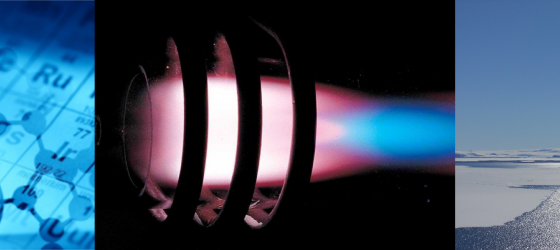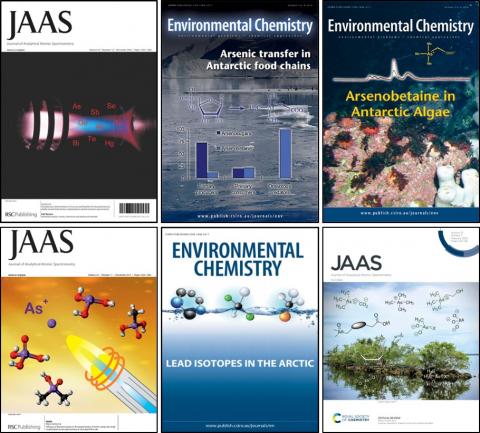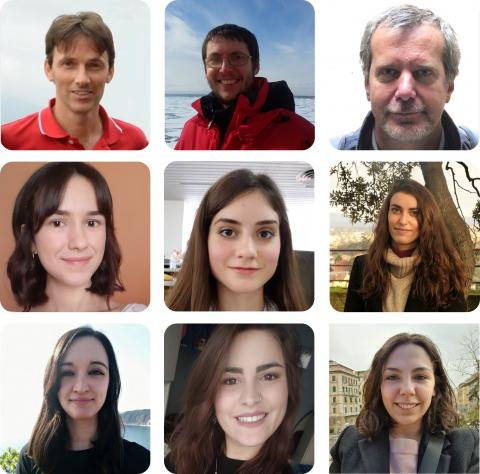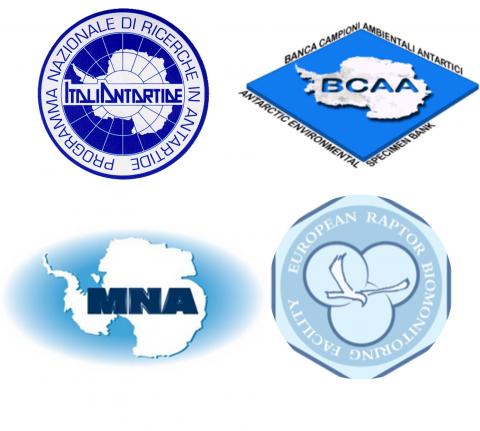| Research | Publications | Staff | Collaborations | Facilities | Join us |
Research
The research activity concerns the development of new analytical methods for elemental, isotopic and speciation analysis of trace elements and their application to environmental, biological and food samples. In particular, the research comprises fundamental and applicative issues related to the spectrochemical analysis of toxic and essential elements, the determination of their speciation and the precise measurement of lead and strontium isotopic ratios, as provenance tracers. The developed methods are mainly applied in the context of environmental studies in the polar regions, with the purpose of investigating the occurrence, potential sources and bioavailability of trace elements, in relation to natural processes and global climate changes. The research is carried out in the frame of national and European projects and involves renowned research groups.
New challenges… more research
In our fast-changing world, scientists are asked to provide the knowledge that is necessary to face worldwide problems, such as climate-related environmental changes, food security and traceability, emerging health threats, energy supply, and so on. In the effort of improving our knowledge of complex systems and to correctly drive the decisions of policy-makers, the obtaining of reliable, objective and reproducible scientific data is of primary importance. As the science of chemical measurements, the analytical chemistry plays a full role in the advancement of the scientific knowledge, offering instruments and methods to continuously give new answers to emerging questions. The activity of the research group is part of this mission, with specific focus on trace elements, their determination by atomic spectrometry and the investigation of their role in the environment.
This activity is briefly illustrated below via few, representative research topics we recently focus on. For a complete review of our studies, you are invited to check our publications.
Arsenic is not so bad!
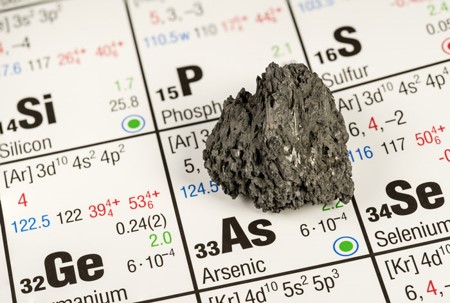
In common parlance, “arsenic” is synonymous with “poison” but, scientifically, this is not correct! In fact, arsenic may occur in several chemical compounds that show wide-ranging levels of toxicity, from highly-toxic to innocuous. Therefore, the identification and quantification of the chemical species of arsenic - a process called speciation analysis - is of great importance for the correct assessment of the quality/safety of a specific environment or food. Besides, arsenic speciation analysis can provide information on the natural transformation/accumulation of this trace element through the food chain and among various environmental compartments.In this context, our research has been aimed at developing new analytical methods for arsenic speciation analysis of environmental and food samples, and at investigating the natural occurrence, transformation and temporal trend of arsenic compounds in Antarctic biota.
For a review on the topic click here.
Sample introduction: the Achilles' heel of atomic spectroscopy?
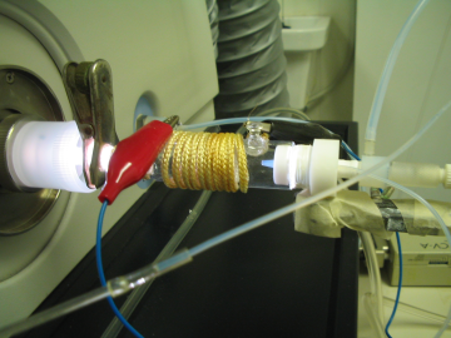
In atomic spectrometry, it was immediately recognized that the sample introduction system largely determines the quality of the analysis, in terms of accuracy and sensitivity. Therefore, a lot of fundamental and technological research has been carried out in order to develop new systems, able to efficiently introduce any kind of sample into the atomization source, with limited matrix effects.
In co-operation with Prof. Jean-Michel Mermet and Prof. José Luís Todolí, we developed an innovative system, called heated torch-integrated sample introduction system (hTISIS), which proved to provide superior performances for the elemental and isotopic analysis of micro-samples by plasma-source atomic spectrometry. Applications of hTISIS comprised environmental samples (seawater, marine sediments, organisms, Antarctic snow), foods (vegetables, wine), biological tissues (human blood, bone tissue, cerebrospinal fluid) and organics (petroleum products and biofuels).
From trace to tracer

In many environmental studies, the determination of trace elements and their isotopic composition can provide valuable information on the geographical sources of both natural and anthropogenic inputs, the relative contributions of these sources over time and the corresponding transport routes. In the last decade, we developed new analytical methods for the precise measurement of lead and strontium isotopic ratios in challenging environmental matrices, using single- and multi-collector inductively coupled plasma mass spectrometry. The methods were validated and extensively applied to the isotopic analysis of atmospheric particulate and surface snow collected in the Arctic and Antarctica, in the context of PRA (Italian Program of Research in the Arctic) and PNRA (Italian National Program of Research in Antarctica) projects. Recently, these studies have been extended to cadmium and mercury isotopic systems.
The research is performed in co-operation with Prof. Frank Vanhaecke (University of Ghent). For a review on the topic click here
Iron is the key
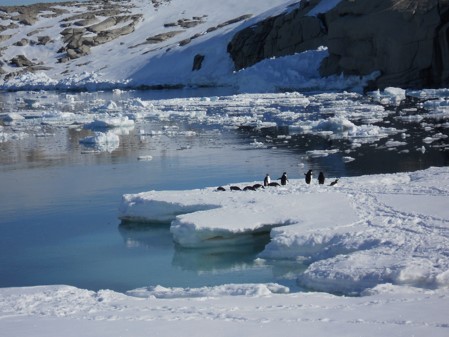
Iron is an essential trace element involved in many biological processes, including photosynthesis and respiration. In vast areas of the Earth, it can limit the marine primary productivity, thereby controlling the biological carbon pump and the sequestration of CO2 from the atmosphere. Consequently, understanding the factors that control the iron availability in seawater and how they might evolve under a global warming scenario, becomes crucial to unravel how the climate system might develop in the next decades. With maximum extension of 18 million km2, sea ice constitutes the dominant and most widespread source of iron in polar waters during seasonal melting and therefore it may play a key role in drawing down atmospheric CO2 levels through the stimulation of primary production. In this context, our research has been aimed at investigating the factors that control the iron biogeochemistry in Antarctic coastal waters and in sea ice, through the application of suitable analytical protocols able to determine the organic speciation parameters.
The research is in co-operation with Dr. Delphine Lannuzel (University of Tasmania) and Prof. Paola Rivaro of the Chemical Oceanography group.
Starting from the fundamentals

In instrumental analytical chemistry, a thorough knowledge of the processes involved in the generation of the analytical signal is complex, but necessary to face practical analytical problems on a rational base. Therefore, despite the research in the atomic spectrometry field is becoming more and more application-oriented, fundamentals studies continues to be of great value. So, our group is also interested in fundamental studies concerning the atomic spectrometry techniques, including sample introduction processes, atomization and excitation mechanisms and matrix interferences.
Keep calm and think multivariate!
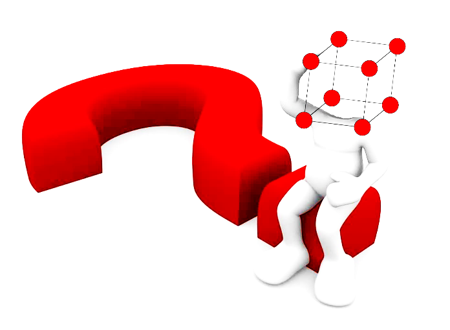
Most of the studies mentioned above makes use of chemometrics, the chemical discipline that uses mathematical and statistical methods to design or select optimal procedures and experiments, and to extract maximum chemical information from data. The key aspect of chemometrics is the multivariate approach, encompassing the simultaneous observation and analysis of more than one variable. Examples of chemometric studies by our research group are the multivariate investigation of matrix interferences, the use of Principal Component Analysis for the selection of optimal internal standards, the optimization of the operating conditions following the experimental design and empirical modelling approach, the analysis of environmental dataset by multivariate techniques.
For a tutorial review on the topic click here
Investigating the nano-world
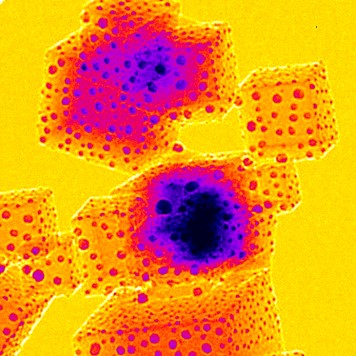
During the last two decades, the rapid growth in the production of nanomaterials and their incorporation in everyday products inevitably lead to their release into the environment. Together with their spread, it became clear the need of analytical methodologies capable of detecting and fully characterizing engineered nanoparticles in this kind of samples.
In this context, the consolidated analytical technique of inductively coupled plasma mass spectrometry (ICP-MS) has found a completely new application. When used in a time resolved mode, called Single Particle (SP), this technique allows to obtain both qualitative and quantitative information on discrete entities, such as nanoparticles.
Following the growing interest of the scientific community in this topic, we are currently focusing on developing innovative analytical methods based on SP-ICP-MS for the detection and characterization of inorganic nanoparticles of different natures, specifically suitable for environmental studies.
The research is performed in co-operation with Prof. Martin Resano and Dr. Eduardo Bolea-Fernandez (University of Zaragoza).
Publications
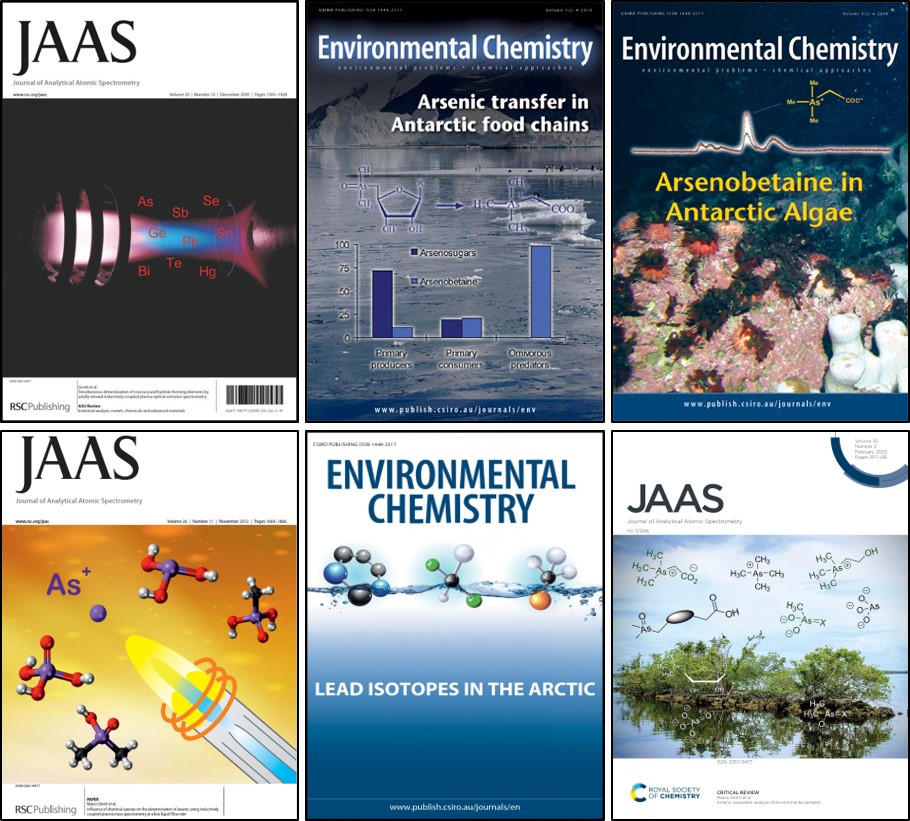
Recent publications
- M.A. Vecchio, L. Abou-Zeid, M. Grotti, F. Vanhaecke, Anthropogenic and natural sources of lead at Terra Nova Bay (Antarctica) based on elemental and isotopic evidence. Environmental Chemistry 22 (2025) EN25081. Link
- A. Bazo, L. López-Villellas, M. Mataloni, E. Bolea-Fernandez, A. Rua-Ibarz, M. Grotti, M. Aramendía, M. Resano, Improving detection and figures of merit in Single-Particle Inductively Coupled Plasma-Mass Spectrometry via transient event heights. Analytica Chimica Acta 1378 (2025) 344694. Link
- M.A. Vecchio, L. Abou-Zeid, L. Suàrez-Criado, M. Vandermeiren, M. Grotti, F. Vanhaecke, Enhanced insight into the biogeochemical cycle of Hg in the Antarctic marine environment of Terra Nova Bay via isotopic analysis. Chemosphere 373 (2025) 144157. Link
- F. Ardini, F. Moggia, D. Di Blasi, P. Rivaro, M. Grotti, L. Ghigliotti, Elemental distribution in tissues of shorthorn sculpins (Myoxocephalus scorpius) from Kongsfjorden, Svalbard. Journal of Marine Science and Engineering 12 (2024) 2245. Link
- M.A. Vecchio, M. Costas-Rodríguez, L. Caiazzo, F. Bruschi, K. Hobin, F. Vanhaecke, M. Grotti, Provenance of mineral dust deposited on Antarctica over the last sixty years by strontium isotopic analysis of snow from Dome C. Atmospheric Environment 338 (2024) 120850. Link
- M.A. Vecchio, L. Abou-Zeid, M. Grotti, F. Vanhaecke, High-precision low-level Cd isotopic analysis using MC-ICP-MS and application to marine samples from Terra Nova Bay (Antarctica). Journal of Analytical Atomic Spectrometry 39 ( 2024) 2591-2603. Link
- M. Grotti, F. Ardini, M.A. Vecchio, M. Mataloni, S. Bertinetti, F. Bruschi, B. Moroni, D. Cappelletti, K. Hobin, F. Vanhaecke. New insights into the sources of atmospheric lead reaching the Arctic by isotopic analysis of PM10 atmospheric particles and resuspended soils. Atmospheric Environment 330 (2024) 120541. Link
- M. Li, A. Boisson-Dernier, D. Bertoldi, F. Ardini, R. Larcher, M. Grotti, C. Varotto. Elucidation of arsenic detoxification mechanism in Marchantia polymorpha: The role of ACR3. Journal of Hazardous Materials 470 (2024) 134088. Link
- M. Grotti, M.A. Vecchio, D. Gobbato, M. Mataloni, F. Ardini. Strontium isotopic fingerprinting of atmospheric particulate matter by quadrupole inductively coupled plasma mass spectrometry. Atomic Spectroscopy 44 (2023) 311–317. Link
- C. Morosini, E. Terzaghi, G. Raspa, M. Grotti, S. Armiraglio, S. Anelli, A. Di Guardo. Arsenic movement and fractionation in agricultural soils which received wastewater from an adjacent industrial site for 50 years. Science of The Total Environment 898 (2023) 165422. Link
- M. Grotti, M.A. Vecchio, D. Gobbato, M. Mataloni, F. Ardini, Precise determination of 204Pb-based isotopic ratios in environmental samples by quadrupole inductively coupled plasma mass spectrometry. Journal of Analytical Atomic Spectrometry, Journal of Analytical Atomic Spectrometry 38 (2023) 1057-1064. Link
- C. Genovese, M. Grotti, F. Ardini, M. Corkill, L. Duprat, K. Wuttig, A. Townsend, D. Lannuzel, A proposed seasonal cycle of dissolved iron-binding ligands in Antarctic sea ice. Elementa: Science of the Anthropocene 10 (2022) 00030. Link
- B. Benedetti, V. Caponigro, F. Ardini, Experimental design step by step: a practical guide for beginners. Critical Reviews in Analytical Chemistry 52 (2022) 1015-1028. Link
- S. Bertinetti, E. Bolea-Fernandez, M. Malandrino, B. Moroni, D. Cappelletti, M. Grotti, F. Vanhaecke, Strontium isotopic analysis of environmental microsamples by inductively coupled plasma - tandem mass spectrometry. Journal of Analytical Atomic Spectrometry 37 (2022) 103-113. Link
- E. Conca, M. Malandrino, A. Giacomino, P. Inaudi, A. Giordano, F. Ardini, R. Traversi, O. Abollino (2021). Chemical Fractionation of Trace Elements in Arctic PM10 Samples. Atmosphere, vol. 12, art. 1152. Link
- L. Caiazzo, S. Becagli, S. Bertinetti , M. Grotti, S. Nava, M. Severi, R. Traversi, High Resolution Chemical Stratigraphies of Atmospheric Depositions from a 4 m Depth Snow Pit at Dome C (East Antarctica). Atmosphere 12 (2021) 909. Link
- S. Bertinetti, F. Ardini, L. Caiazzo, M. Grotti, Determination of major elements in Antarctic snow by inductively coupled plasma optical emission spectrometry using a total-consumption sample introduction system. Spectrochimica Acta Part B 181 (2021) 106231. Link
- A. Bazzano, S. Bertinetti, F. Ardini, D. Cappelletti, M. Grotti, Potential Source Areas for Atmospheric Lead Reaching Ny-Ålesund from 2010 to 2018. Atmosphere 12 (2021) 388. Link
- P. Rivaro, F. Ardini, D. Vivado, R. Cabella, P. Castagno, O. Mangoni, P. Falco (2020). Potential sources of particulate iron in surface and deep waters of the Terra Nova Bay (Ross Sea, Antarctica). Water, vol. 12, art. 3517. Link
- C. Cerutti, R. Sánchez, C. Sánchez, F. Ardini, M. Grotti, J.L. Todolí. Prospect on rare earth elements and metals fingerprint for the geographical discrimination of commercial Spanish wines. Molecules 25 (2020) 5602. Link
- E. Conca, M. Malandrino, A. Giacomino, E. Costa, F. Ardini, P. Inaudi, O. Abollino. Optimization of a sequential extraction procedure for trace elements in Arctic PM10. Analytical and Bioanalytical Chemistry 412 (2020) 7429-7440. Link
- M. Grotti, J.L. Todolì. Nitric acid effect in inductively coupled plasma mass spectrometry: new insights on possible causes and correction. Journal of Analytical Atomic Spectrometry 35 (2020) 1959-1968. Link
- C. Petroselli, B. Moroni, S. Crocchianti, R. Selvaggi, F. Soggia, M.Grotti, F. d'Acapito, D. Cappelletti. Iron speciation in different Saharan dust advections and effect of the procedural blank on the results from X-ray Absorption Spectroscopy and selective leaching experiments. Atmosphere 11 (2020) 735. Link
- S. Bertinetti, F. Ardini, M.A. Vecchio, L. Caiazzo, M. Grotti. Isotopic analysis of snow from Dome C indicates changes in the source of atmospheric lead over the last fifty years in East Antarctica. Chemosphere 255 (2020) 126858. Link
- F. Ardini, G. Dan, M. Grotti. Arsenic speciation analysis of environmental samples. Journal of Analytical Atomic Spectrometry 35 (2020) 215-237 Link
- F. Ardini, A. Bazzano, M. Grotti. Lead isotopic ratios in the Arctic environment. Environmental Chemistry 17 (2020) 213-239 Link
- C. Cerutti, C. Sánchez, R. Sánchez, F. Ardini, M. Grotti, J.L. Todolí. Determination of trace elements in undiluted wine samples using an automatized total sample consumption system coupled to ICP-MS. Journal of Analytical Atomic Spectrometry 34 (2019) 674-682. Link
- E. Conca, O. Abollino, A. Giacomino, S. Buoso, R. Traversi, S. Becagli, M. Grotti, M. Malandrino. Characterization and temporal evolution of the elemental composition of PM10 collected at Ny-Ålesund (Norwegian Arctic). Atmospheric Environment 203 (2019) 153-165. Link
- C. Petroselli, B. Moroni, S. Crocchianti, R. Selvaggi, F. Soggia, M. Grotti, F. D'Acapito, D. Cappelletti. Iron speciation of natural and anthropogenic particulate matter by spectroscopic and chemical methods. Atmosphere 10 (2019) 8. Link
- F. Ardini, A. Bazzano, M. Grotti. Lead isotopic analysis of Antarctic snow by quadrupole ICP-MS using a total-consumption sample introduction system. Journal of Analytical Atomic Spectrometry 33 (2018) 2124-2132. Link
- L. Yang, K. Nadeau, J. Meija, P. Grinberg, E. Pagliano, F. Ardini, M. Grotti, C. Schlosser, P. Streu, E.P. Achterberg, Y. Sohrin, T. Minami, L. Zheng, J. Wu, G. Chen, M.J. Ellwood, C. Turetta, A. Aguilar-Islas, R. Rember, G. Sarthou, M. Tonnard, H. Planquette, T. Matoušek, S. Crum, Z. Mester. Inter-laboratory study for the certification of trace elements in seawater certified reference materials NASS-7 and CASS-6. Analytical and Bioanalytical Chemistry 410 (2018) 4469-4479. Link
- C. Genovese, M. Grotti, J. Pittaluga, F. Ardini, J. Janssens, K. Wuttig, S. Moreau, D. Lannuzel. Influence of organic complexation on dissolved iron distribution in East Antarctic pack ice (SIPEX-2). Marine Chemistry 203 (2018) 28-37. Link
- M. Grotti, F. Soggia, F. Ardini, A. Bazzano, B. Moroni, R. Vivani, D. Cappelletti, C. Misic. Trace elements in surface sediments from Kongsfjorden: occurrence, sources and bioavailability. International Journal of Environmental Analytical Chemistry, 97 (2017) 401-418. Link
- A. Bazzano, K. Latruwe, M. Grotti, F. Vanhaecke. Determination of the isotopic composition of sub-ng amounts of Sr in Antarctic snow by multi-collector ICP-mass spectrometry. Journal of Analytical Atomic Spectrometry, 32 (2017) 1004-1008. Link
- A. Bazzano, F. Ardini, A. Terol, P. Rivaro, F. Soggia, M. Grotti. Effects of the Atlantic water and glacial run-off on the spatial distribution of particulate trace elements in the Kongsfjorden. Marine Chemistry 191 (2017)16–23. Link
For a complete list of publications, visit the Scopus pages of Marco Grotti and Francisco Ardini.
Top cited articles
- M. Grotti, M.L. Abelmoschi, F.Soggia, P.Rivaro, E.Magi, R.Frache. Temporal distribution of trace metals in Antarctic coastal waters. Marine Chemistry, 76 (2001) 189-209. Link
- M. Grotti, F.Soggia, C.Ianni, R.Frache. Trace metals distributions in coastal sea ice of Terra Nova Bay, Ross Sea, Antarctica. Antarctic Science, 17 (2005) 289-300. Link
- M. Grotti, C. Lagomarsino, R. Frache. Multivariate study in chemical vapor generation for simultaneous determination of arsenic, antimony, bismuth, germanium, tin, selenium, tellurium and mercury by inductively coupled plasma optical emission spectrometry. Journal of Analytical Atomic Spectrometry, 20 (2005) 1365-1373. Link
- M. Grotti, E. Magi, R. Leardi. Selection of internal standards in inductively coupled plasma atomic emission spectrometry by principal component analysis. Journal of Analytical Atomic Spectrometry, 18 (2003) 274-281. Link
- M. Grotti, F. Soggia, F. Ardini, R. Frache. Determination of sub-nanomolar levels of iron in sea-water using reaction cell inductively coupled plasma mass spectrometry after Mg(OH)2 coprecipitation. Journal of Analytical Atomic Spectrometry, 24 (2009) 522-527. Link
Staff
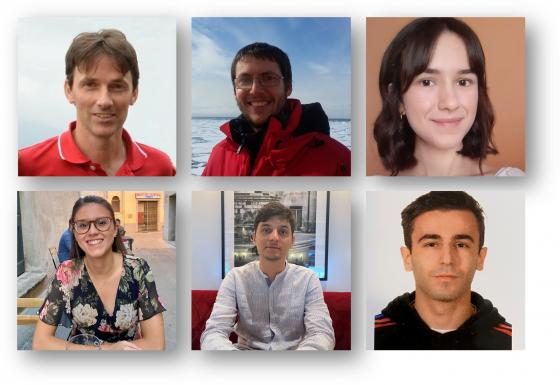
Marco GROTTI
Full Professor
e-mail: grotti@unige.it
ORCID ID: 0000-0001-6956-5761
Short CV
Francisco ARDINI
Associate Professor
e-mail: ardini@unige.it
ORCID ID: 0000-0003-0094-9227
Short CV
Matilde MATALONI
PhD Student
Project title: Development of new analytical methods for dimensional and elemental analysis of metal nanoparticles in environmental samples
Elisa CERRI
PhD Student
Research title: Source identification of particulate matter in Antarctic region and study of its role in climate change and pollution
Fabio PERUZZI
Master Student
Thesis title: Determination of chemical tracers in polar precipitation
Brando PAGANIN
Master Student
Thesis title: Determination of the stoichiometry of perovskite crystals by spectroscopic techniques
Former students (last five years)
- Elisa CERRI, Study of mineral dust reaching the Antarctic plateau by elemental and isotopic analysis of atmospheric particulate matter, snow and resuspended soil samples. Research fellow (2nd Jannuary-31th October 2025).
- Marta ZANARDI, Elemental and isotopic analysis of arctic atmospheric precipitations. Master Degree in Chemical Sciences (20 March 2025).
- Viola MINUTOLI, Rain-on-snow events: how their composition influences snow properties in the high Arctic. Research fellow (1st March 2024-28th February 2025).
- Alessia VECCHIO, Tracing sources and pathways of trace tlements in polar regions by isotopic analysis. PhD in Chemical Sciences and Technologies (25 March 2025).
- Elisa CERRI, Synthesis and elemental analysis of metallic nanoparticles in environmental matrices. Master Degree in Chemical Sciences (19 December 2024).
- Ilva POSHNJARI, Analysis of nanoparticles and microplastics using atomic spectrometry techniques. Master Degree in Chemical Sciences (19 December 2024).
- Ilaria BENVENUTO, Use of the dynamic reaction cell technology for the isotopic analysis by ICP-MS. Master Degree in Chemical Sciences (22 March 2024).
- Anna BRACCO, Development of methods of elemental analysis of colloidal nanocrystals by ICP-MS, in co-tutoring with Prof. Liberato Manna, IIT Genova. Master Degree in Chemical Sciences (22 March 2024).
- Alessandra BIAZZO, Determination of metals in vegetable oil samples using ICP-AES: new matrix preparation procedure for optimal instrumental analysis, in co-tutoring with Dr. Luca Mazzi, Laboratorio Chimico Cosulich, Genova. Master Degree in Chemical Sciences (22 March 2024).
- Alessia CHIARO, Study of the elemental composition of Antarctic snow samples. Master Degree in Chemical Sciences (22 March 2024).
- Matilde MATALONI, Isotopic analysis of atmospheric lead reaching the polar regions. Master Degree in Chemical Sciences (24 March 2023).
- Dalia GOBBATO, Development of an analytical method for strontium isotope analysis in polar environmental samples by ICP-MS. Master Degree in Chemical Sciences (24 March 2023).
- Antonello MOLINARI, Elemental and isotopic analysis of snow collected from an Antarctic coastal area. Master Degree in Chemical Sciences (24 March 2023).
- Giulia PERNA, Elemental analysis of atmospheric particulate by ICP-MS/MS and XRF, in co-tutoring with Dr. Fabio Ghioni, ARPAL Genova. Master Degree in Chemical Sciences (24 March 2023).
- Elisa CERRI, Development of ICP-based methods for the determination of rare earth elements in geological samples. Bachelor Degree in Chemistry and Chemical Technologies (16 December 2022).
- Stefano BERTINETTI, Isotopic analysis of atmospheric particulate from polar regions. PhD in Chemical Sciences and Technologies (22 June 2022)
- Sara PAGANELLI, Isotopic and metallographic analysis of bronze objects from French sites, in co-tutoring with Dr. Justine Vernet (Centre national de la recherche scientifique, France) and Prof. Paolo Piccardo of the research group of Metallurgy of the DCCI. Master Degree in Chemical Sciences (10 June 2022).
- Anahi Federica GIUSSANI, Arsenic speciation analysis of Arctic fish species by HPLC-ICPMS. Master Degree in Chemical Sciences (25 March 2022).
- Martina GANDALINI, Lead isotopic analysis of PM10 collected from the polar regions. Master Degree in Chemical Sciences (25 March 2022).
- Laura ROMANI, Development of an analytical method to quantify trace metals in seawater using ICP-MS/MS with a total consumption sample introduction system, previous pre-concentration, in co-tutoring with Prof. José Luis Todolí (University of Alicante, Spain). Master Degree in Chemical Sciences (25 March 2022).
- Beatrice COSSU, Elemental analysis of Antarctic seawater. Bachelor Degree in Chemistry and Chemical Technologies (18 February 2022).
- Federico MOGGIA, Elemental and speciation analysis of Arctic fish species. Master Degree in Chemical Sciences (11 June 2021).
- Giulia TASSISTRO, Determination of trace elements in seawater by inductively coupled plasma atomic emission and mass spectrometry using an innovative sample introduction system, in co-tutoring with Prof. José Luis Todolí (University of Alicante, Spain). Master Degree in Chemical Sciences (30 April 2021).
- Danilo GRATTAROLA, Analysis of nanoparticles in environmental samples by ICP-MS, in co-tutoring with Dr. Fabio Ghioni, ARPAL Genova. Master Degree in Chemical Sciences (25 March 2021).
- Francesca CIRELLI, Elemental analysis of Antarctic marine and atmospheric matrices by ICP-MS. Master Degree in Chemical Sciences (25 March 2021).
- Elisa PARODI, Analysis of Antarctic snow by ICP-OES using an high efficiency sample introduction system. Master Degree in Chemical Sciences (25 March 2021).
Previously: Laura MAGNASCO, Ines TASSANO, Alessia VECCHIO, Antonello MOLINARI, Dalia GOBBATO, Greta DAN, Clelia SERENI, Claudia CERUTTI, Matilda CICALA, Cristina GENOVESE, Nicole DE GIORGI, Fiorenza CRITELLI, Valentina ROSA, Federico BENVENUTO, Fabio FOSSATI, Nicolas PALA, Andrea BAZZANO, Elena SODDU, Miguelina FERNANDES, Monika MARCINKOWSKA, Amanda TEROL.
Collaborations
International collaborations
- Martin Resano and Eduardo Bolea-Fernandez (University of Zaragoza), Nanoparticle analysis by SP-ICP-MS.
- Delphine Lannuzel (University of Tasmania), Iron biogeochemistry in sea ice.
- Frank Vanhaecke (University of Ghent), Isotopic analysis of strontium and lead in Antarctic snow.
- Jan Koschorreck (German Federal Environmental Agency), Environmental specimen banking.
- Kevin Francesconi (University of Graz), Arsenic speciation in Antarctic organisms.
- Josè Luis Todolì (University of Alicante), Plasma source atomic spectrometry: fundamentals and applications.
- Jean-Michel Mermet (Spectroscopy Forever), Plasma source atomic spectrometry: fundamentals and applications.
- Dmitri Katskov (Technikon Pretoria), Mechanisms of electrothermal atomization.
Networks
- In the framework of PNRA (Italian National Program for Antarctic Research) and PRA (Italian Research Program of Research in the Arctic) projects, the group has established strong connections with research units of the following institutions: Italian National Research Council, National Institute for Nuclear Physics, and Univerities of Florence, Perugia, Pisa, Turin and Venice.
- In the context of BCAA (Antarctic Environmental Specimen Bank), we are linked to the International Environmental Specimen Bank Group and to the Museo Nazionale dell’Antartide.
- In the framework of the EU COST Action 16224, we are involved in the scientific network aimed at establishing the European Raptor Biomonitoring Facility.
Analytical facilities
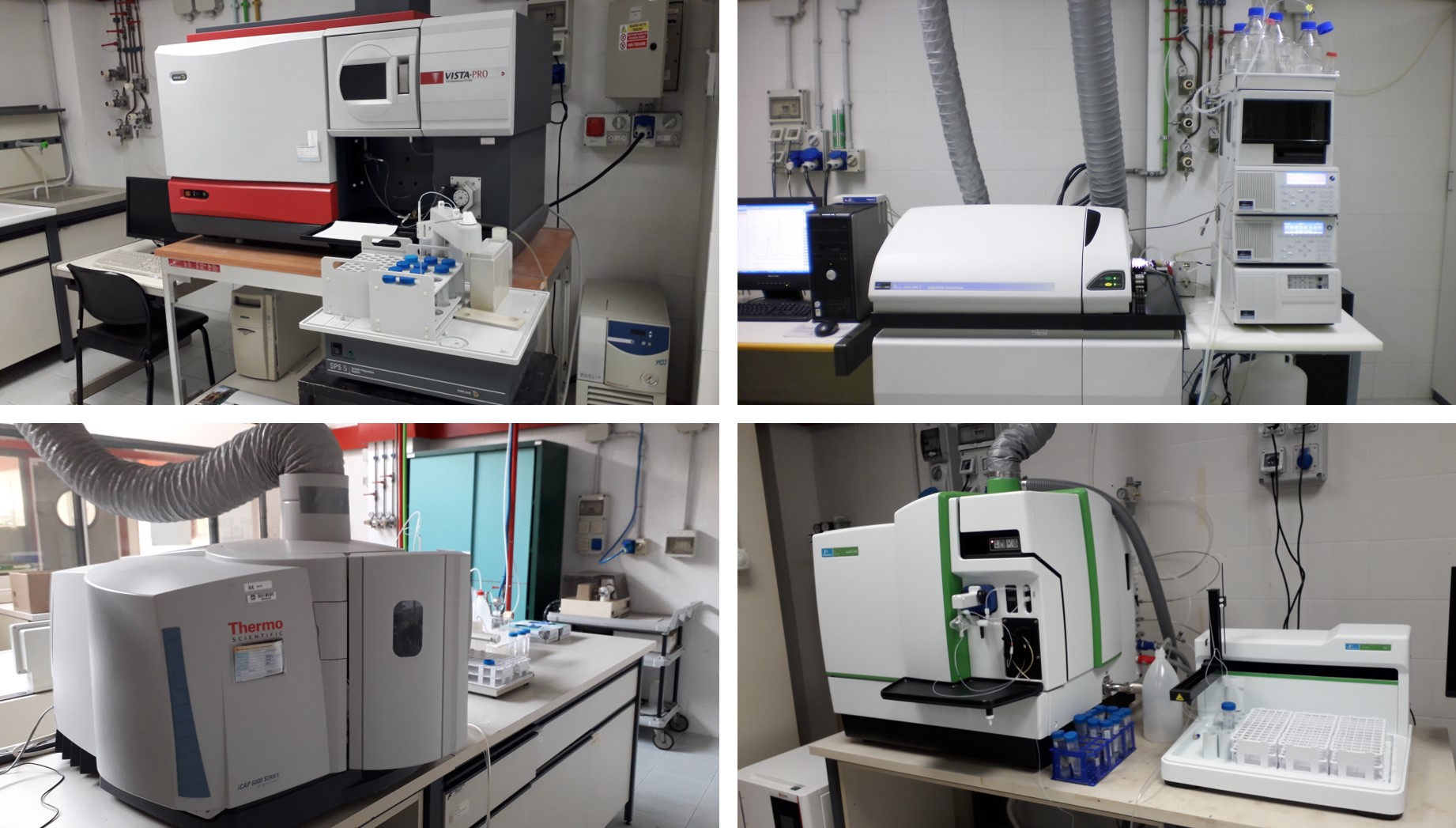
The group directly manages the following analytical facilities:
- Inductively coupled plasma atomic emission spectrometers (Varian Vista PRO, Thermo iCAP 6000).
- Inductively coupled plasma mass spectrometers (Perkin-Elmer DRC II, Perkin-Elmer NexIon 2000).
- Atomic absorption spectrometers (Varian SpectrAA 400 equipped with Hg cold vapour generation and pre-concentration system; Varian AA240 equipped with flame, graphite furnace and hydride generation systems).
- Various sample introduction systems (pneumatic nebulizers, Peltier-cooled system PC3, ultrasonic nebulizer, hydride generation/cold vapour system, high-efficiency total introduction system hTISIS, HPLC for speciation studies).
- Clean laboratories for sample preparation, equipped with microwave-assisted acid digestion systems (CEM MARS-5, CEM DS-2000), laminar flow benches and various sample preparation facilities for ultratrace analysis (filtration and pre-concentration apparatuses, ice-core sub-sampler, ultrasonic bath, freeze-drier, analytical balances, etc.).
- Storage facilities at BCAA.
How to join us
- If you are a Master student at the University of Genoa: there are open positions for your thesis in our group. Just contact us.
- If you are a Master student of an European University, you can join us through the Erasmus+ Programme either under the "study" or "traineeship" type of mobility, and perform part of the thesis in our group. If you are interested, please contact us at least 6 months before the beginning of the stage period.
- If you are a prospective PhD student, please note that you must apply in May-June for a Doctorate course starting on November 1st. More information can be found here.
- If you wish to join us for a post-lauream traineeship or for a post-doc position, you are very welcome, but you have to find an external sponsorship.
Short CV
Marco GROTTI
Marco Grotti was born in Genoa in 1968. He graduated in 1992, received his PhD in Chemistry in 1996 and he is currently Professor of Analytical Chemistry at the University of Genoa. His research interests comprise fundamental studies in atomic spectrometry, development of new analytical methods for elemental, isotopic and speciation analysis of environmental matrices and their application to the study of polar ecosystems. He collaborates with prestigious research groups in the field and he has been involved in >30 research projects, funded by the European Union, the Italian Ministry of Education, University and Research and the National Research Council. In the framework of PNRA (Italian National Program for Antarctic Research) and PRA (Italian Research Program in the Arctic) projects, he participated on seven expeditions to Antarctica and two expeditions to the Arctic, he is responsible of research units and of the Antarctic Environmental Specimen Bank. He is member of CONISMA (National Association for Marine Sciences) and SCI (Italian Chemical Society). He acted as project referee for various foreign institutions and he is regular referee for the main analytical and environmental chemistry journals. Author of ~125 articles on ISI journals (h-index: 30; citations: ~2700), 2 textbooks, and >100 Congress presentations.
Francisco ARDINI
Francisco Ardini was born in Santa Rosa de Calamuchita (Argentina) in 1983. He graduated in Chemical Sciences in 2008 and earned his PhD degree in Chemical Sciences and Technologies in 2012 at the University of Genoa. In 2011, in the framework of his doctorate, he carried out a period of three months of research activity at the University of Alicante (Spain). Currently, he is an associate professor at the Department of Chemistry and Industrial Chemistry of the University of Genoa.
His research is focused on the study of major elements, trace elements, isotope ratios and organometallic compounds in different environmental matrices, mainly from polar areas (seawater, snow, sea ice, brine, rain, marine and atmospheric particulate matter, soil, sediments and organisms), and the development of new analytical methods (mainly based on ICP spectrometry) for the determination of these parameters. He took part in several projects of research, including PRIN (Research Projects of National Interest), PNRA (National Program of Research in Antarctica) and PRA (Program of Research in the Arctic). In the framework of these projects, he took part in six Italian expeditions in Antarctica, as well as in two campaigns in Ny-Ålesund (Svalbard, Norway).
He is member of SCI (Italian Chemical Society) and IAS (Italian Aerosol Society). He has authored ~50 publications in international journals and ~70 communications at national and international congresses, and he conducts referral activities for international journals and foreign institutions of the field.
